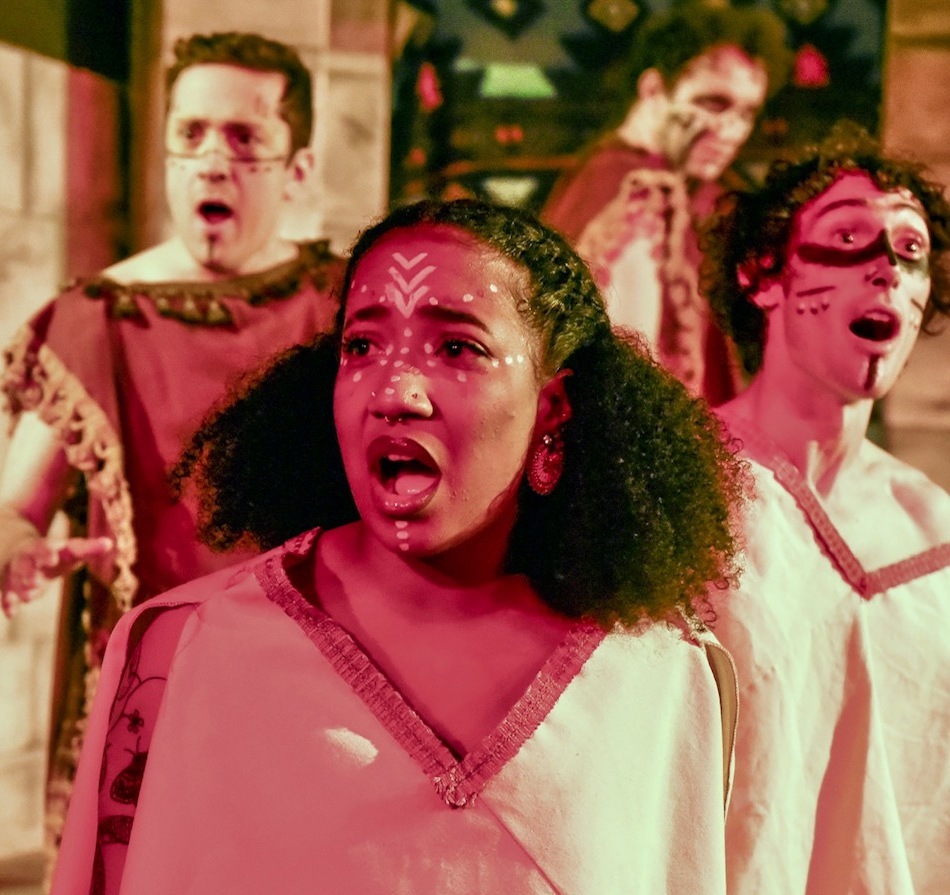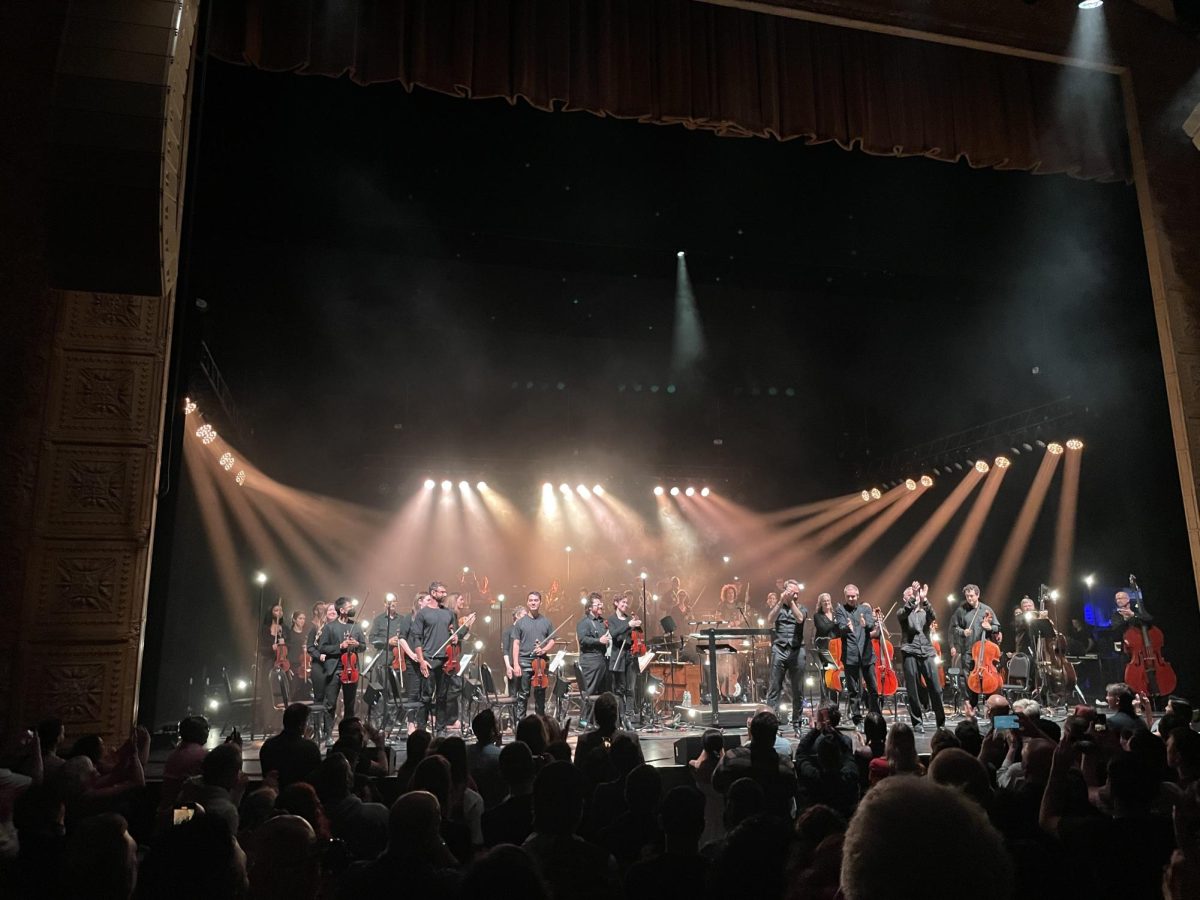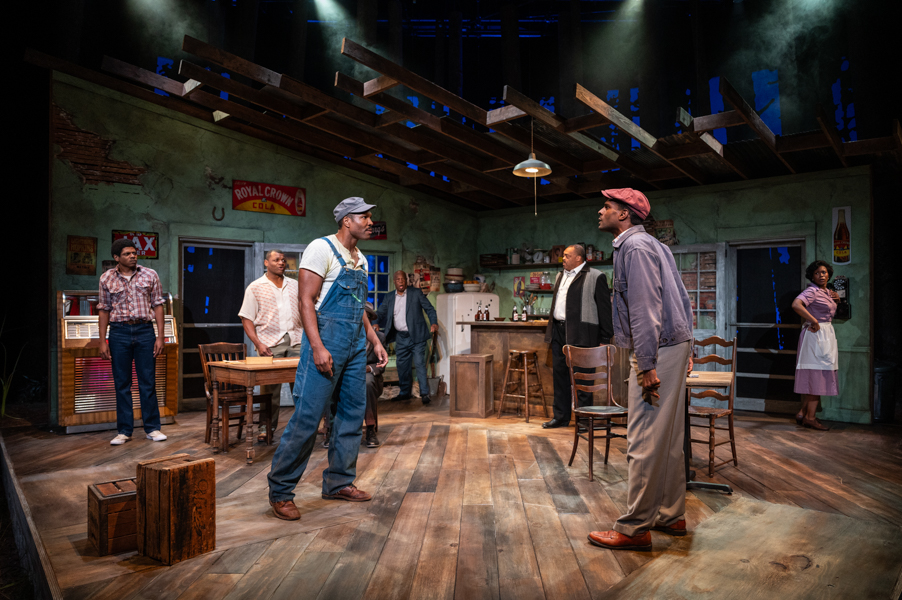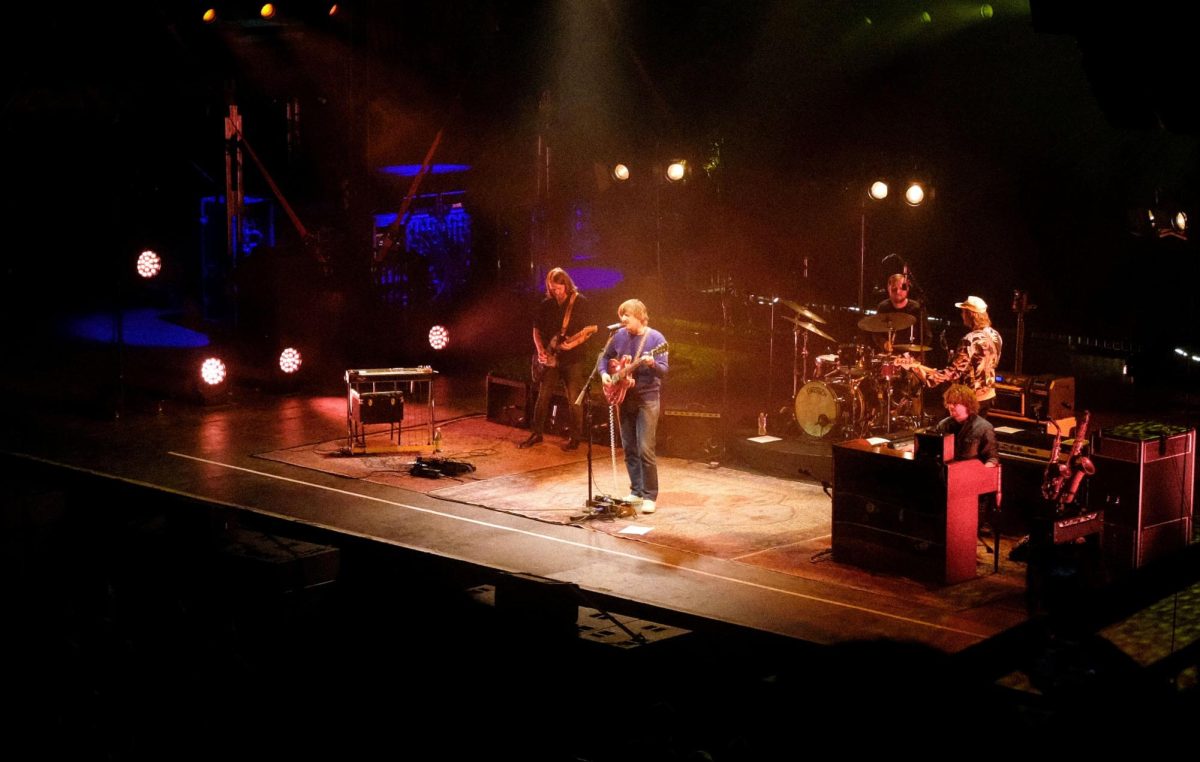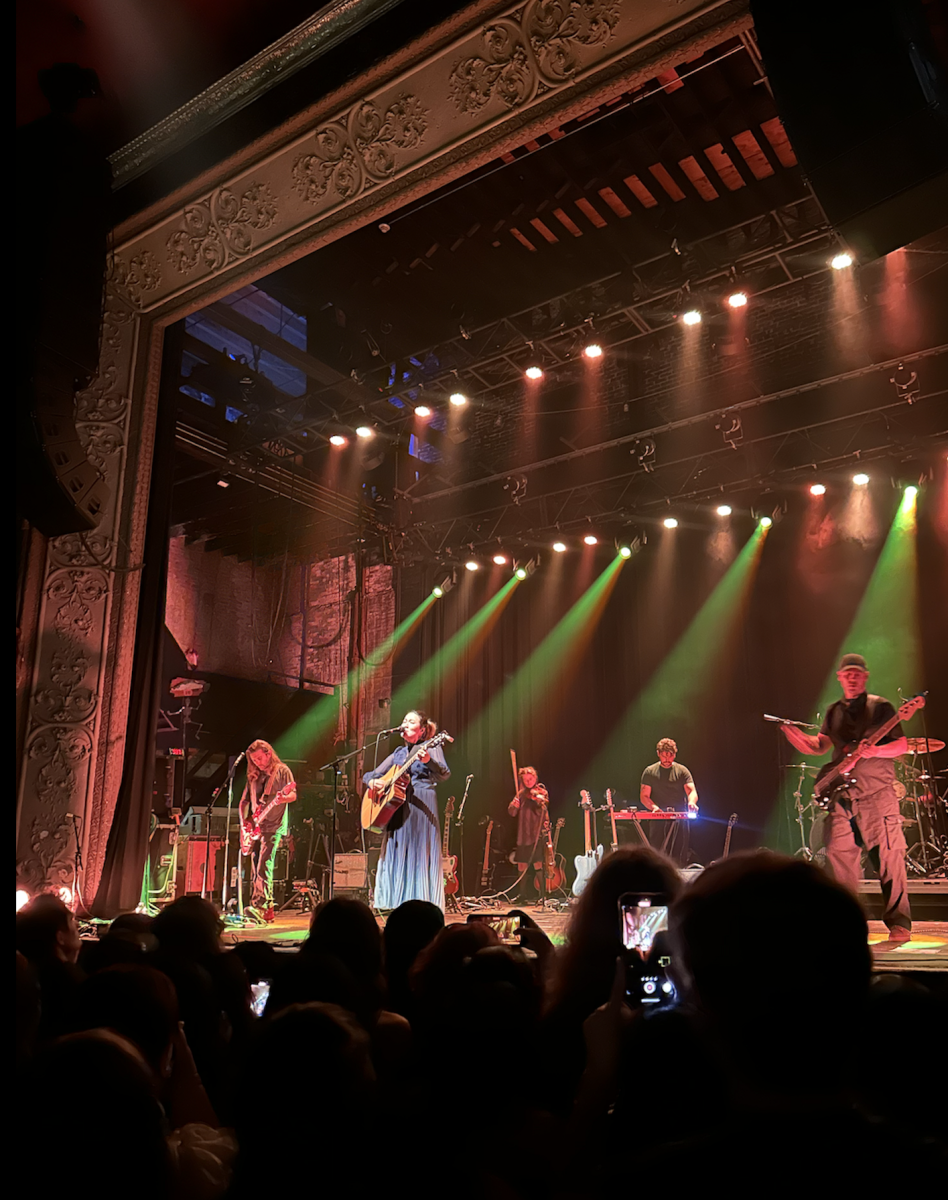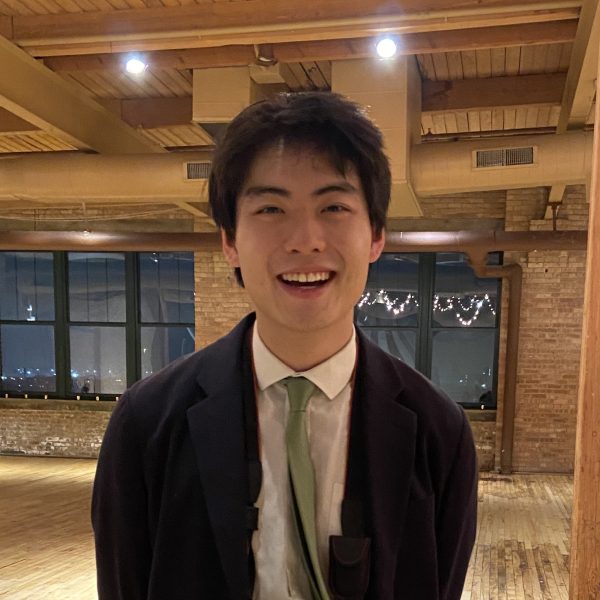Jay Españo is PrideArts’s artistic director. In this interview, Maroon Arts Reporter Toby Chan sits down with Jay Españo to talk about his latest musical, Aztec Human Sacrifice, which ran from May 5 to June 18 at City Lit Theater.
The following interview has been lightly edited for clarity.
Chicago Maroon (CM): Hi Jay, thanks for meeting with me. So I actually did a little bit of digging, and I see that you’re from the Philippines and that you have some experience with film. How did you see your career transitioning to directing [theater] and being the artistic director for PrideArts?
Jay Españo (JE): So I started back in the Philippines. I started my career in theater, to begin with. And then from there, I started working around every aspect of it. I’ve done props, I’ve done costumes, I’ve acted, because that was part of our training before. And then I moved to Singapore to pursue my musical theater degree. And then from there I was doing TV, I was doing film, all these things. And then from there, I said to myself, “You know what, maybe I should try to go to the US.” I wanted to pursue film. I was supposed to go to LA. I had an agent already. And then, well, I have family here in Chicago and I met my husband. So the plans changed. I said, okay, I’m gonna stay in Chicago for now at least. So while I was here in Chicago I’ve been doing theater, and I’ve worked in PrideArts before. And then two years ago they approached me if I wanted to step in as artistic director. And I said I didn’t want to do it because I know it’s a lot of work. And that means not being able to do, aside from acting, all these other things. But then they kept on asking me, and then I had COVID. And then COVID made me realize, “You know what, I could die tomorrow. And what have I done with my life?” [It was] like an existential moment.
So I said, “All right, I’m just gonna do it. If I fail, at least I can say I tried.” And so now I’m artistic director, and it’s a lot of work. The last three years I’ve been—not really stuck, but I’ve dedicated myself to PrideArts, trying to make it diverse…because the criticism was that PrideArts has always been supporting just very white [productions].…The last few years were a reckoning for all the theater companies. So when I stepped in, I said, “I’m gonna make a few changes.” And so that’s what I did. I’ve introduced a lot of new shows. The last show that we did was a show called One in Two, which is about the HIV crisis in the Black community. And then as we’re closing our season now, we’re doing Tango, which is a play based in Singapore. We just opened yesterday.
CM: Oh, I think I saw that that was playing with PrideArts. Sounds like life moves pretty fast! How did you come to do Aztec Human Sacrifice?
JE: I was just happy that I was able to do Aztec because I said this would be a nice breather for me. Like sneaking away. And it so happened that I assigned directors for other shows. [With PrideArts], I only direct about one show [per season]. I always do the beginning of the season. And so when they approached me to do Aztec, I was like “Okay, I’m going to try.” And I started reading it. And I was actually pleasantly surprised because, when I was reading it, it felt like a Disney script. And I didn’t put two and two together until I met Philip [LaZebnik], because Philip also wrote a lot of Disney [movies], like Mulan and Pocahontas. So he’s a Disney guy, he’s done a lot of Disney, and I didn’t even realize that until I was reading it. I enjoyed it, but then the next challenge was finding the cast for it because originally we really wanted it to be an indigenous cast, which was really a challenge. But we were so lucky just to find all these [actors] because we’re mostly all Latinos in the cast. And so we started rehearsing, but still, I would always find myself having this doubt, like am I doing the right thing? Because I wanted to be true to the culture. I don’t want the show to be like, oh, they’re making fun of the Aztecs. So I started reaching out to Virginia Miller, who is a UIC professor of Mesoamerican art. She’s kind of well-versed in Aztec culture. So I tapped her, and I asked her, “Hey, can you give us a lecture?” I wanted to empower the cast just so we’re on the right track. And so she came in and she did a talk—like a two-hour talk. And then the cast had the opportunity to ask questions pertaining to some of the things that we do that were written in the script. And then, I also reached out to an Aztec dance theater company here in Chicago, because like I said, I wanted to immerse the cast in the culture. And so they came, and they blessed us [with] this incense kind of thing.
At first, I was like, “Okay, what’s happening?” She said, “Can we all come in a circle,” and then they lit up this incense, and then they chanted and blessed us. I just asked them, “Hey, are you okay if you can help us with this?” So they read the script first and then they said, “Okay, I think I want to come and see your rehearsal.” So they came, and it was fun, and it was great to have the blessing of these people who are really trying to preserve the culture. And they gave us notes on the movement and all these things. And from there, I felt confident, and I felt the cast also felt reassured that we were doing the right thing.
CM: I’m glad you touched on the cultural considerations of the show. It’s very nice to hear about the Aztec dance company that came and did the blessing.
JE: Yeah, they were actually planning to come to one of the shows. And they’re actually going to perform [for us] because last time they were supposed to perform, but we didn’t have time. We wanted to see how they dance and all these things, so they’re gonna come and perform for us, so the cast is excited to have that experience.
CM: Going back to earlier, you talked about the Disney-like element of the show. There was such relatability for me as an audience member despite the historical setting—how did you do that?
JE: I think that comes from the lead, from the Chosen One. Because the character is kind of like a fish out of water character. It’s kind of like putting me in that setting. It’s like “Okay, what am I doing in this time period?” And then he’s kind of out of place in a way. Like he’s so advanced for his time. That’s why his lines are kind of modern in a way, like “experiment”—I mean, all these things—or “psychosexual,” who says that? So that’s his character. In a way, I feel like he’s us giving a comment on that time period. Like, hey, maybe let’s try to experiment because maybe the sun will come out without the sacrifice. So I think that comes from that character.
CM: I thought the casting with Freddy Mauricio was fantastic. He was very naturally comedic.
JE: Well, like I said, I feel like the comedy will come out if you attack it in a really high-stakes way. Like “Hey, my life is on the line here.” So we, the audience, as spectators, relate to this character. “Oh, gosh, hey, you gotta escape. You gotta go somewhere. You gotta hide,” or things like that.
CM: Yeah, I definitely noticed that tension. At the very start of the show, I was almost a little bit frightened by the scene with the heartbeats, the thumping, and the red light that introduced the sacrifice ritual. Was horror a part of the show as well?
JE: I think it’s not like horror, it’s more like these people really treated the ritual as sacred. For them, this is their life. Because if you put yourself in their position, it’s not only that they feel the same way too, like “Oh, our lives depend on this, you know, and the sacrifices, because if not, we’re all gonna die.” So, for them, this is—this is real. This is life or death.
CM: I see. I’m really glad about that clarification. So the tagline of Aztec is love, death, and the end of the world. Everything seems to revolve around the heart—the ritual sacrifice, the lovers being killed in the heat of passion. What were your thoughts on bringing those themes together?
JE: When the cast and I sat together and talked about the script, they also gave all these things. And the theme that was going through my head was that it was facing the fear of the unknown. That’s the thing that we were going through. Everybody works off of that theme. For example, the Chosen One fears that he’s going to die because he doesn’t know. I mean, I think everybody fears death because we don’t know what’s happening beyond. Is there life after death? So I think that’s the main thing that we were working on. The fear of the unknown and then the priest is like that too. Like “I need to make this sacrifice because otherwise, we don’t know if the world is gonna end.”
CM: I like that. You mentioned the word “unknown.” At the start of the second half there seemed to be a real transition into the desert with the sorcery and the ghosts. I was wondering if you could talk a little more about that?
JE: Well, I’m so glad that you noticed that because act 2 is totally different from act 1. I mean, first of all, visually it’s darker. And then, as you mentioned, all these elements started coming out. And the challenge for me was “how do I tie the two together?” So I actually wanted to have the monster, the dark, come out at the beginning—when the emperor saw the hummingbird. Originally my idea was to have him see the bird in front of him, but then I also wanted to have a visual like the monster coming out on the sides. But then we realized that we don’t have enough space during act 1. So I said, “Let’s just scrap that idea,” and I just wanted to have a change of light—just to change the mood in a way, just to give a foreboding warning that this is going to happen soon. And then we added those statues during the chamber scene where we see all these statues with the princess. So I added those elements just so it ties up when they come to life in act 2.
CM: Oh, I hadn’t realized that. I guess this is probably my last question, but I was wondering if you have a personal favorite scene in Aztec?
JE: I think that my favorite scene would be, I think, the ghosts coming out—the ghosts of the [sacrificial] victims coming out. Yeah, I just thought it was weird—having two-headed cast [members] coming out. I wish we had more time to fix the costumes because originally the costumes had the front and the back different so that when you faced their back you can really tell, “Oh my gosh, it’s different.” [From one side] they’re the victims, and [from] the other side, statues from the princess or something. But we’re limited in budget, so we just did what we could. Hopefully we were able to entertain people, and I hope the message came out.
You can check out more of Director Jay Españo’s work with PrideArts at the Pride Arts Center in Buena Park at 4139 N Broadway or at https://www.pridearts.org/.



